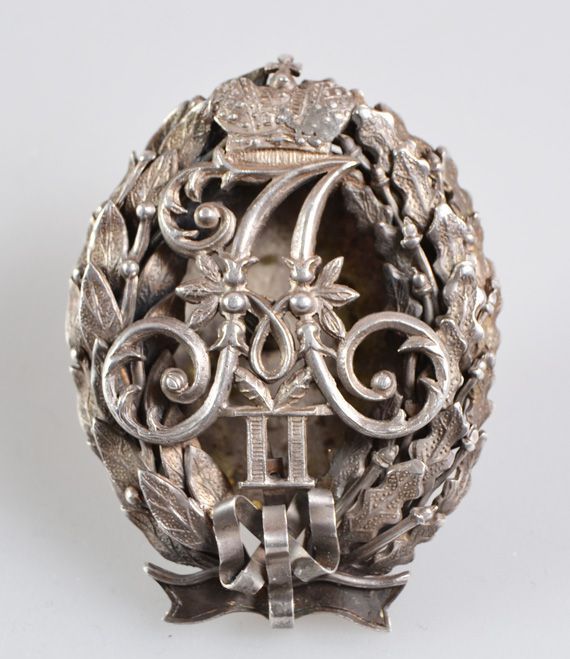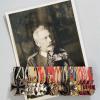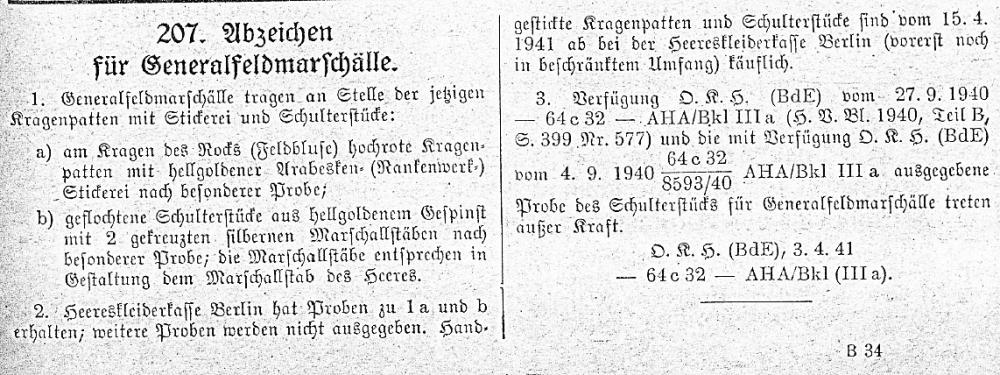-
Posts
591 -
Joined
-
Last visited
-
Days Won
2
Content Type
Profiles
Forums
Blogs
Gallery
Events
Store
Posts posted by filfoster
-
-
Revisiting this old thread. I am now trying to recreate this medal bar. It shouldn't be hard but it is, because, as the thread disclosed, there are no clear pictures of his medal bar, which probably changed as he acquired more gongs.
Anyone interested in taking another crack at this? So far, only the 'bookends' seem accounted for: The 1870 EK2 and the Centenary Medal. The portraits hint at a lot of things and he had a wide choice. No Long Service? No 1870-71 Campaign cross? There's some weird medal, black or very dark ribbon with a complicated metal device on a ribbon bar. Can't place it.
BTW, I'm not after his very late medal bar, already posted in this forum here:
0 -
Thank you both! It seems like this area would benefit from a good comprehensive reference with some color plates and photos. Evidently there is not yet enough interest to make it commercially attractive?
0 -
Does anyone know of a decently comprehensive illustrated guide to rank insignia of the Reggio Esercito in WW1? The Osprey offering is deficient in illustrating the rank insignia as is the Mollo WW1 book. There are a few, incomplete hits on Google.
Specifically, what was the cuff rank and collar insignia for a Colonel in command of a Brigade?
What colonel insignia was the three silver stars surrounded by gold embroidery?
Molte grazie per le risposte.....
0 -
-
Still, some one individual first had the idea. That idea obviously found enough agreement to get it done. I think it would be fun/rewarding to identify who first had this idea, although I am resigned to the fact that it is probably lost to history.
0 -
It is still incongruous to me that in the midst of a world war, someone (still unidentified!) thought these added distinctions were necessary. The insignia for field marshals had included the same collar and shoulder cords as for generals since 1870, granting the collar patches began about 1900 and that many generals entitled wore regimental distinctions. The WW1 field marshals, when not wearing regimental distinctions, wore shoulder cords and collar patches in common with lower grades of general, but with the shoulder devices of field marshal.
I hope someone can identify the father of this brainchild.
0 -
It'll be worth the wait. The Germans were so incongruous; fighting a world war but not too busy to create and amend uniform details that arguably didn't need to be done at all. I read somewhere that von Leeb was annoyed at the extra expense of changing these collar patches and shoulder cords. Clearly he wasn't the one lobbying for the sartorial enhancements.
0 -
I doubt there's any source for this information but it's amazing to consider. On the eve of a two-front, total war for the triumph (soon to be just survival) of the Reich, some particular individual of sufficient importance thought it necessary to add more gold to the uniforms of field marshals. Only the Germans!
I do hope someone with better researching skills or at least a hunch and a better database can point to the someone we can credit this idiocy.
0 -
Many of the uniforms look distinctly blue. It must be an interesting story how this adjective came to be applied to that color.
0 -
No one has statutes or portraits to support this? My guess, if it existed, was that it was for the head of the order, the Kaiser, but this is only a speculation.
0 -
As a student of German uniforms, I'm glad the Germans tweaked the collar and shoulder insignia for the field marshal rank in April, 1941, but I'm curious about why and even more, who? Someone had to come up with this idea of a little extra bling for the field marshals, a little ego boost (as if this lot suffered self-esteem issues), that cost them tailoring money and gave workers and valets a couple of projects. It would be fun to identify exactly who woke up one day and just had to get this ball rolling. It's not as if the Germans didn't have more pressing concerns by mid-1941. So, Who and why?
I don't know if Hugo Boss, often credited with the design of the Wehrmacht uniforms, decided to pad his commission but I would guess someone in the armed forces high command got this wild hair.
0 -
Christian 1962: Thank you!
0 -
Fantasy piece? It's a shame as it's an attractive piece. Why would they copy it in gold when silver would have been less expensive and more authentic? Weird.
0 -
Thank you! I have wondered about this for years! I should have asked here sooner. One of life's mysteries answered!0 -
I apologize for this in advance but I am curious: What does the 'pike' in 'pike gray' refer to? A fish? A road? A pole?
0 -
So there were no firm regulations about it?
0 -
Metallic thread rank stars in the metal contrasting with the underlay lace braid. These stars were made in at least two sizes. Which ones were commonly worn with the field uniform rank collar tabs?
0 -
There are several copies of a Royal Hohenzollern House Order Grand Cross collar offered on ebay and elsewhere, in gold and silver collars.
Was the collar ever made in gold? Can't find any reference for this.
0 -
On 7/5/2014 at 19:58, Bill Dienna said:
Very impressive, and not at all silly, I think!
Agreed, a very fine display. I also made this bar to display on a reproduction of one of his uniforms, mostly from replicas except for the common Russian medals.
On 7/29/2014 at 11:55, JapanX said:Hmmm
Looks very much like badge for the suite of A-II

This is the badge Nicholas II wore often with his service dress uniform. He was an adjutant for both his grandfather, Alexander II and his father Alexander III. He usually wore the shoulder boards of a Colonel of the Imperial Guards 4th Rifle Regiment which had both cyphers embroidered on them, beneath a crown.
0 -
The medal ribbon is probably the key but I can't match it. Your guess of the medal is close but both edges should be white and on my monitor, they're not. It's not among any of my German States references I have. Some Russian ribbons were 'asymmetrical' in that way. The 'sea green' coat and epaulette style suggests Russian.
0 -
Some of these responses suggest a new thread: 'marital aids and sex toys of the Second Reich'. I am aware of certain electric shock treatments for women's 'hysteria' but the concept of dildos and butt plugs for the High Command is intriguing! Can you imagine a display of Bakelite, 'India rubber' or carved wooden 'toys' at the local militaria show, all with alleged 'provenance'?
0 -
Wow! Thanks for this information and the photos!. I have seen some of these in Jan Kube's book from many years ago. If you had to be in a closet, this would be the one I'd choose!
0 -
17 hours ago, Glenn J said:
An 1899 Rangliste does of course exist. however, it will not help you as the King and Emperor is not listed with a specific rank, only as Chief (Chef) of the Army.
Regards
Glenn
Dang! If this is so, then there is only photographic evidence and whatever may be found in biographies or histories of the period. I haven't found anything that adds much, yet. Thanks to all who have contributed. At this point, it seems that he exchanged the two pips of a full general for the crossed batons of a field marshal in 1900, without an intervening time when he wore the insignia of a Colonel General (three pips) or a Colonel General with the rank of Field Marshal (crossed batons and three pips).
0 -
On 11/27/2015 12:41:48, arb said:
All,
According to the Stammliste of the 1. GRzF p. 44
"03. Mai 1900 die Gradabzeichen eines General-Feldmarchalls angelegt." On 3 May 1900 put on the rank insignia of a GFM.
AndyAccording to the Verlag book 'Die Deutschen Generale', he accepted in 1900, the nomination made 'in the name of the Army' (I'm sure no politicking was involved...) to promote himself to Field Marshal. My question was what rank did he hold when he 'accepted' this honor? A Rank List from 1899-if it exists- would be helpful.
0





Looking for a list of: Generalfeldmarschall August von Mackensen,
in Germany: Imperial: The Orders, Decorations and Medals of The Imperial German States
Posted · Edited by filfoster
content
Sorry for my confusion! Still, we are now at the same place: A six or seven medal bar and only the beginning and the end accounted for. Some hints at some of the medals: one near the end looks like a Turkish medal, the Order of Osmanie. Someone must be able to get a sharper focus on these photos. Would that foreign medal come before the Prussian Centenary? Wouldn't think so but.....